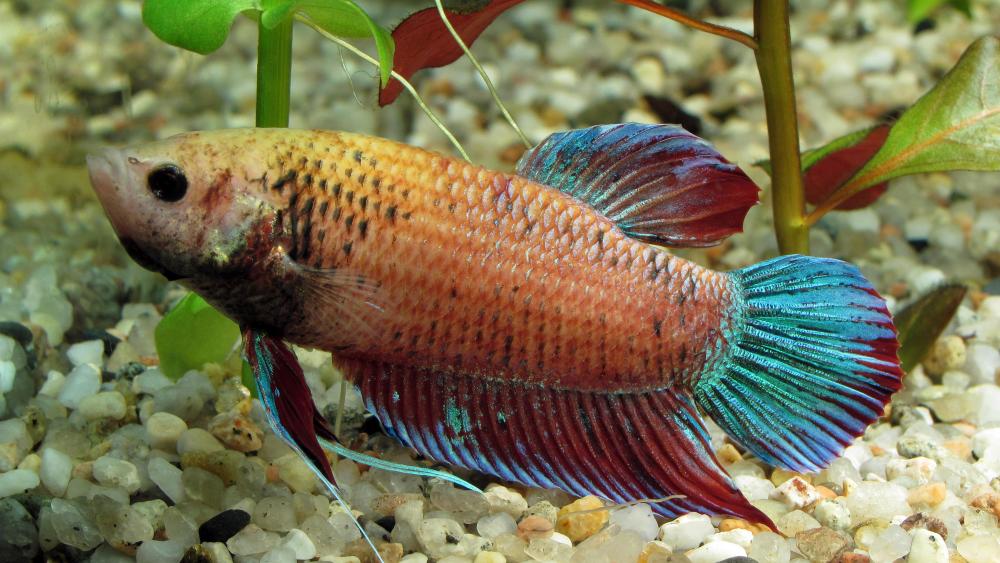
Tropical fish such as the Siamese fighting fish (Betta splendens) shown here are more often at risk because the pathogen reproduces more rapidly in higher temperatures. | Photo: Bernard Ladenthin, CC BY 4.0, via Wikimedia Commons
When fish develop a velvet covering, this should be seen as an alarm signal. In many cases, they have velvet disease, a highly infectious parasitic disease that is fatal if left untreated. Therapeutants containing copper, malachite green or methylene blue were traditionally available. However, their residues are discharged into the environment, and are highly toxic to other organisms. As a result, these chemicals have been banned for use in aquaculture in several European countries; a prohibition for commercial ornamental fishkeeping is expected to follow.
This has led to an intensive search for alternative treatment options, also to combat other pathogens. In Reviews in Aquaculture, Thora Lieke and her colleagues provide an overview of traditional and new therapeutants for the treatment of various parasitic diseases. In the search for environmentally friendly treatments for fish diseases, they recommend concentrating on two aspects: treating parasites using residue‐free or naturally occurring substances; and enhancing the immune system of fish.
These residue-free, “alternative” therapeutants include hydrogen peroxide and peracetic acid, which have been proven to be effective against a variety of aquatic pathogens, also in the treatment of velvet disease. However, they may add to the stress level of the infected fish. The use of natural feed supplements such as vitamins, plant extracts, prebiotics and probiotics is therefore being investigated in numerous studies. These supplements activate the immune system and increase animal welfare, making fish less vulnerable to diseases. Humic substances are also known to act as immunostimulants, and are the subject of research throughout the world. As a natural part of aquatic ecosystems, they can be ingested via the gills, as proven by Thora Lieke and her colleagues in another study.



